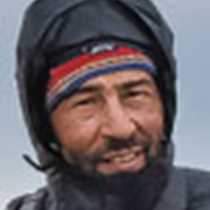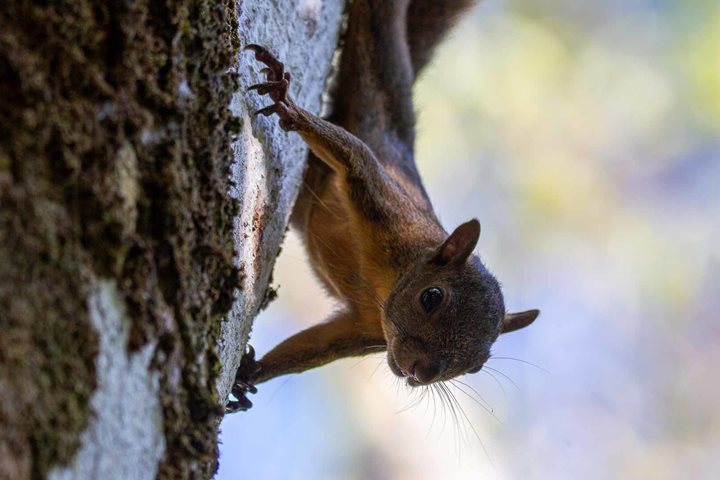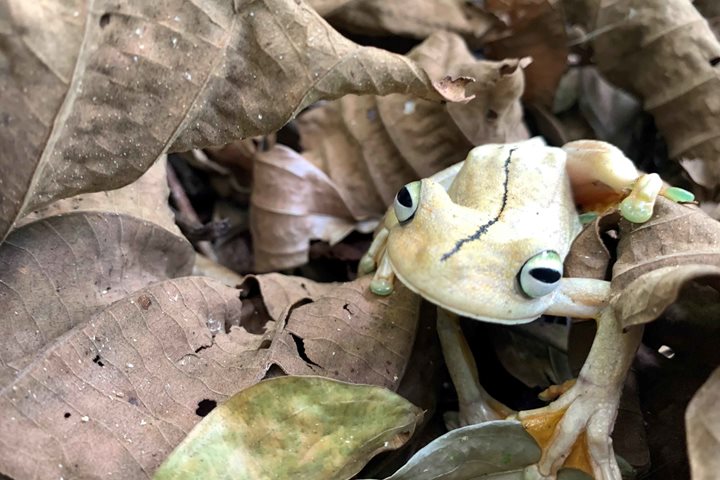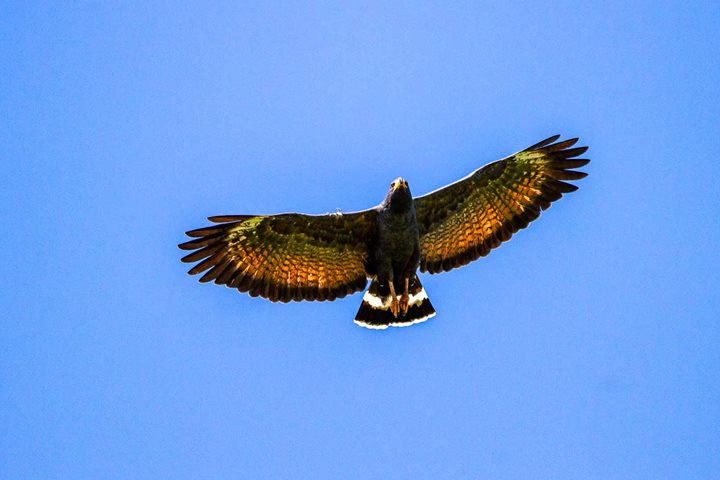Last night we started our adventure immediately after picking up our Panama Canal pilot. National Geographic Sea Lion disengaged from the pier of the very busy port of Colon on the Caribbean side of Panama in Central America and headed to the Gatun locks.
After all the necessary presentations and introductions, we proceeded to have dinner and just as we were eating dessert we found ourselves already at the entrance of the first set of locks – our gateway for our southbound transit through this monument to human perseverance and engineering, and an important part of modern human history.
As we entered the first set of locks, we soon found ourselves totally immersed in the bustling activity of men and machinery, and the interesting combination of the past with the present. The first to receive us was something inherited from the past: a tiny little rowboat with two men in it wearing orange lifejackets and yellow helmets, the cable handlers in charge of passing-on ropes of the past to the steel cables of the present, attached to the modern 2.3 million dollar, 14-ton Mitsubishi locomotives. Aside from the new and modern locomotives and super tugboats though, the Panama Canal was so well built that pretty much everything, from the minuscule wooden rowboat to the gigantic doors of the locks, is the same after 100 years. And still going strong!
We were all very impressed with the ease in which huge ships (some built to fit in the locks) are so carefully directed through the canal, with literally inches to spare. After the crossing of the first set of locks on the Caribbean side of Panama, Sea Lion anchored for a well-deserved quiet and restful night at 85 feet above sea level in Gatun Lake. Today at exactly 5 a.m. the engines woke up again in preparation for the arrival of our second of three Panama Canal pilots to take us through the total length of the canal.
Our next activity for this morning included visiting the island of the famous Smithsonian Barro Colorado Research Station (BCI). This is a man-made island, created by the Gatun Lake after the damming of the mighty Chagres River. As the sun started to come up we found ourselves already anchored by BCI. This morning provided a particularly a magnificent sunrise. As the sun slowly started to peek through the densely forested islands the peaceful scene was constantly disrupted by the sudden appearance of gigantic ships, as a reminder of where we were.
We always feel so fortunate to be able to visit BCI. Anybody who feels the “fever” for tropical biology has at some point felt themselves transported to the trails of BCI through the narrations and descriptions of the vast collection of publications of the many students and scientists that have roamed its network of trails for a better understanding of the tropical rain forest here.
We split into several small groups to explore BCI by walking on its trails or by exploring the shoreline in our inflatable boats. It is already a success just to be able to visit BCI, but aside from this we were rewarded with some great sightings of crocodiles, howler and spider monkeys, agoutis, tinamous, and colorful birds, like slaty-tailed trogons, and chestnut-mandibled toucans among others.
The afternoon was spent later navigating through the Panama Canal, watching the expansion of it and the never-ending dredging. Navigating by the humongous machines, cranes, dredges, barges, tugboats and ships of all sizes and shapes; navigating through the infamous Culebra Cut, the Contractors Hill, then under the modern, recently-built Centennial Bridge. We finally arrived at the locks on the Pacific side – Pedro Miguel and Miraflores – the largest gates in the canal, built to withstand the much larger variation of tides on the Pacific Ocean. Then finally, already on the Pacific Ocean, we went under the Bridge of the Americas as we observed the distant skyline of the modern city of Panama with all its new skyscrapers.
A well-spent first day, full of activities, contemplation of nature, and the marvel of the Panama Canal.







